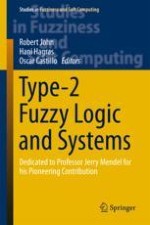2018 | Buch
Type-2 Fuzzy Logic and Systems
Dedicated to Professor Jerry Mendel for his Pioneering Contribution
herausgegeben von: Prof. Dr. Robert John, Prof. Dr. Hani Hagras, Prof. Dr. Oscar Castillo
Verlag: Springer International Publishing
Buchreihe : Studies in Fuzziness and Soft Computing
